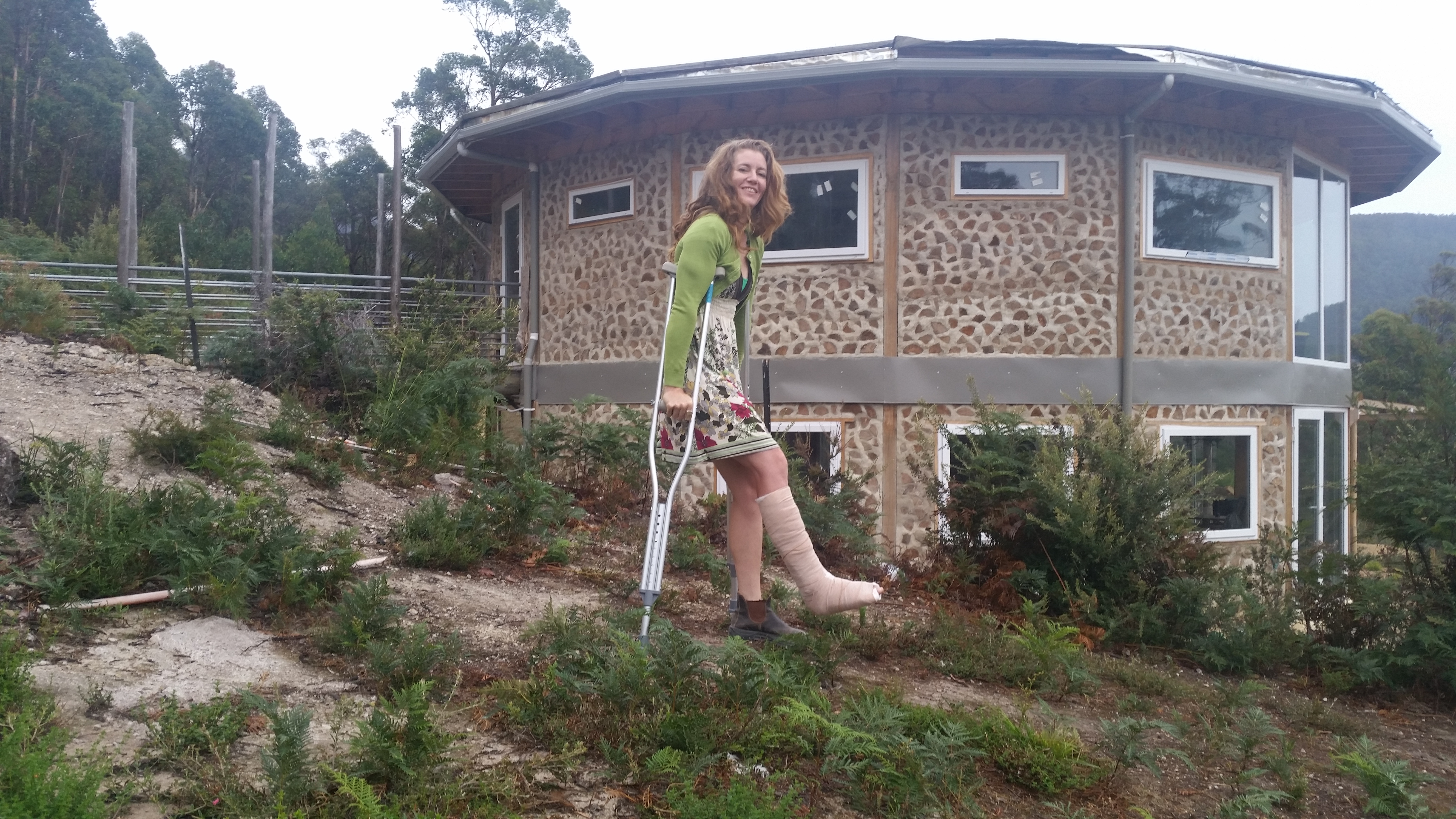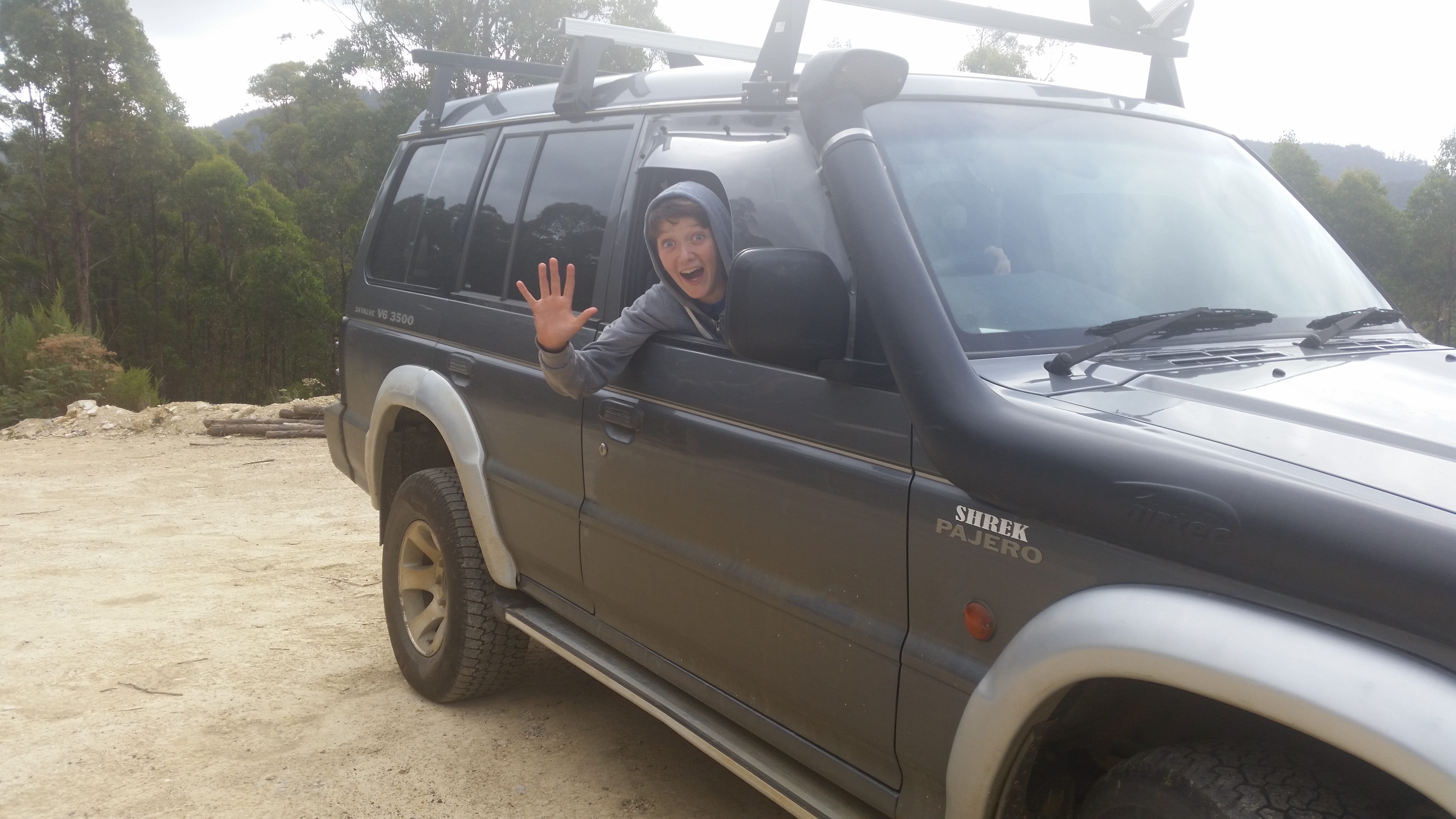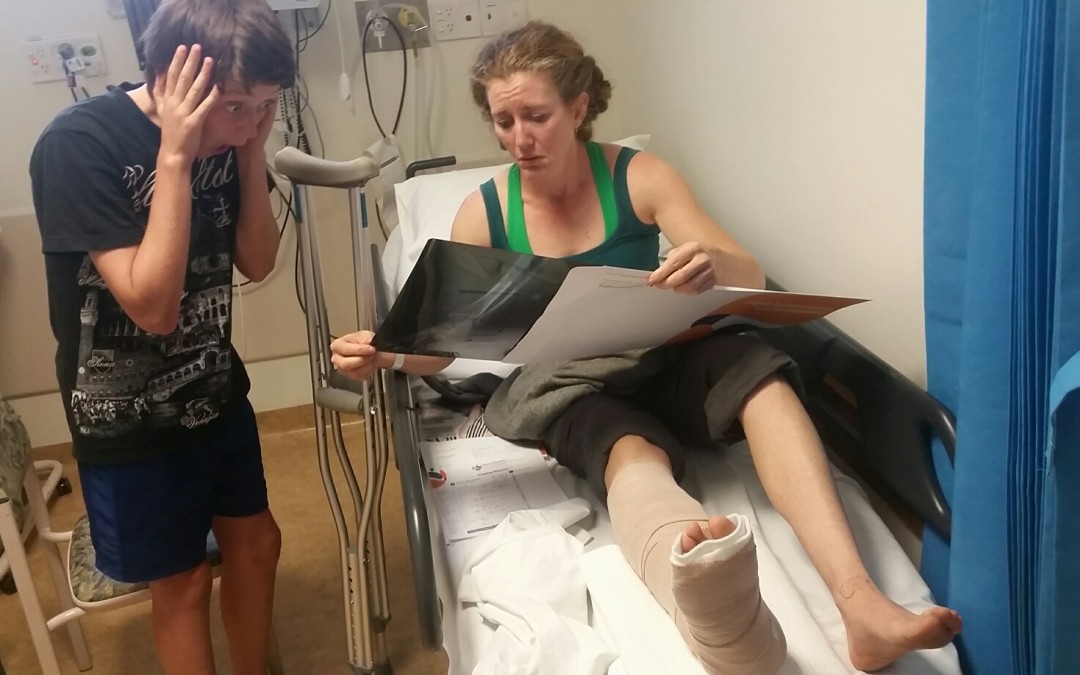Living in a 2 storey house without stairs…and a broken ankle
When I posted about living in a house with no stairs, a lot of folk (quite sensibly) raised concerns about how we would cope in this house if injury struck, or in our old age. Always ready to go the extra miles for our readers, I went ahead and broke an ankle. (Old age will have to wait, though).
Briefly: While I was playing at some bouldering in a rockclimbing gym, I fell awkwardly and fractured one of the bones in my right lower leg. No surgery required, but I am in a cam boot, on crutches for who knows how long, not allowed to drive…basically, a perfect injury for assessing the difficulty of living in the middle of nowhere in a 2-storey house with no stairs.
It is true, we have a rope to get up and down storeys. But while we may be eccentric, we are not idiots. When we designed the house, we planned for possible future injury and probable eventual old age and made the two levels wheelchair-friendly. We also designed for access to both levels by car. We have a bridge to the second level that we can either drive or walk to.
Being Injured in the House that Worked Out
- Access to both levels– This has proven to be just fine. Our house is level with where we park our car, so it is no problem to access the lower level. The lower level contains everything I need: toilet and shower, kitchen, room with a bed. I could have moved downstairs for the duration of my convalescence, but it is actually easy enough to walk up the outside slope on crutches and access the 2nd storey via the bridge, so that is what I do.

And as of this morning, one week post-injury, I used the rope to go downstairs- much faster than going outside. Once my ankle pain abates, I will use it to go up as well, but at the moment, the action of climbing up causes too much discomfort.
-
- Opening Doors– This is actually quite a big hassle. We designed all the doors in our 16-sided house to open OUTWARDS to give more useable internal space. It gave us more space, but trying to keep hold of a heavy double glazed glass door on a windy day while on crutches is destined to end unhappily. If I was going to be on crutches for the rest of my life, I would tie cords onto all our door handles so that I could wrap the cords around my wrist to keep hold of the door while still being able to use my crutches.
- Carrying Objects while on Crutches– OK. This is near impossible, but it would be near impossible in ANY house. You cannot use your hands to carry things when you are needing them to use crutches. I am getting by just treating the rest of the family like slaves. If my current state were to become permanent, I would need a walker with a basket (or a wheelchair) and a basket on a pulley to transport items up and downstairs. Or maybe a well-trained dog.
- Driving– There is no public transport to our valley. We drive the kids 15 minutes to a bus stop (and pick them up) everyday. Me not being able to drive is a DISASTER for us, especially since Peter often works away. Here are three strategies we put into place, with two being typical of most families in our situation, and one not so much.
- Inform the kids’ school, work, and anyone else relevant that there may be disruptions in attendance and why. For a city person like myself, it’s quite a wake-up call to be in a situation where there may actually be NO FEASIBLE WAY to get somewhere beyond our front gate. Without a car and without public transport, we are just too far out.
- Start networking with the neighbours quicksmart. Luckily for us, we have a set of neighbours who drive similar places at similar times. Ask for help, and then get ready to make some hefty repayments to the Favour Bank in the future.
- Teach the kids to drive. Ho ho, you THINK I am kidding, but I am not. We started teaching our kids to drive a year ago when they were 12 and 10, knowing that in bushfire season, if the adults in the family were unable to drive for some reason, the kids would need to be able to get to the nearest bushfire safety meeting place, which is 5 kilometres away. This has come in extremely handy with my broken ankle. Recently, neighbours were able to drop us to the boundary of our property and our 13 year old son drove me the 1km home in our manual 4WD. Pretty cool.
- And a fourth strategy we have not tried but will investigate further- maybe a moped license? Or even better, buy a jetpack. We need to look into other transport ideas.
Would you trust this driver?

5. Chores– For the moment, no chainsawing or chopping firewood for me, maybe for a month or more. Feeding our chooks is a hassle because all our pathways are uneven and the chickens are 50 metres away. Raspberries in our orchard are just dropping onto the ground to rot while I have skipped a week of visiting them to pick. Meals are all being cooked by Peter or the kids. I’m lucky everyone else in the house is old enough to help out and take over the chores.
That sums it up. At 1 week with a broken ankle, I can say that the House That Worked Out is an OK place to have an injury. It has emphasised the need for good systems and preparedness; our water saving irrigation methods have meant that I have been able to leave the gardens without worrying, and we started the firewood supply early, so not a major problem for me to be out of action there. If we had a freezer, pre-prepared meals would have been handy, but kids who can cook is even better!
Easily the biggest problem is being cut off due to no public transport and not being able to drive.
But when you live in a paradise like this, maybe it is a blessing in disguise…


Recent Comments